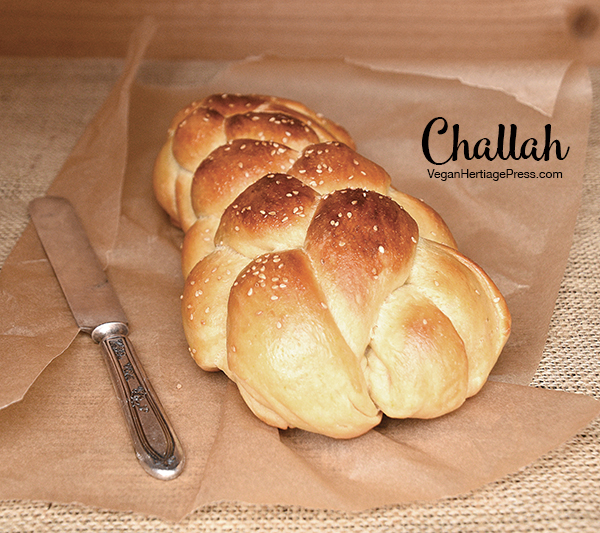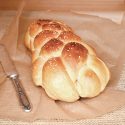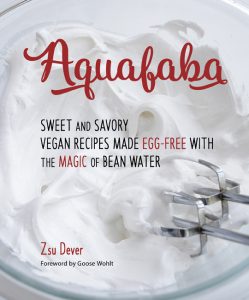 This lightly sweet, rich bread is traditionally made with egg yolks and features a beautiful braid and a golden egg-wash crust. Zsu Dever’s vegan challah recipe is made using aquafaba in the loaf and an aquafaba wash to finish it off.
This lightly sweet, rich bread is traditionally made with egg yolks and features a beautiful braid and a golden egg-wash crust. Zsu Dever’s vegan challah recipe is made using aquafaba in the loaf and an aquafaba wash to finish it off.

Vegan Challah
Servings 2 loafs
Ingredients
Dough
- 3/4 cup warm water, not hotter than 110°F
- 6 tablespoons maple syrup, divided
- 1 tablespoon dry active yeast
- 6 tablespoons canola or other neutral oil
- 5 3/4 cups unbleached all-purpose flour
- 2 teaspoons sea salt
- 2 pinches turmeric
- 1/2 cup aquafaba, see Note
Aquafaba Wash
- 1/4 cup aquafaba, see Note
- 1/2 teaspoon arrowroot or cornstarch
Instructions
-
Dough: Combine the water, 1 tablespoon of the maple syrup, and yeast in a medium bowl. Set aside for 5 minutes to proof. Add the remaining 5 tablespoons of the maple syrup and oil.
-
Combine the flour, salt, and turmeric in a separate medium bowl and set aside.
-
Add the aquafaba to a large bowl or the bowl of a stand mixer and use a whisk to beat the aquafaba until light and frothy, about 1 minute. Add the yeast mixture and about 4 cups of the flour mixture. Knead the dough in the stand mixer or using a large wooden spoon. Mix well and add the rest of the flour mixture as needed to create a firm dough; try adding most, or all, of the flour mixture. Knead the dough for 10 minutes to develop the gluten. The dough should be smooth and push back when poked.
-
Transfer the dough to a lightly oiled bowl, cover the bowl, and let the dough rise in a warm place until doubled, about 1 hour. Deflate the dough and let it rise again until doubled, about another hour. Divide the dough in two and divide each half into three, four, or six pieces, depending on how you would like to braid the dough. Keep the pieces covered until ready to use.
-
Roll each portion of dough into a 12-inch long, tapered rope. Braid half the ropes into a challah loaf. Set the braided dough on a baking sheet, repeat the process with the other half of the ropes, and cover each loaf with a towel. Let the dough rise in a warm place for 40 minutes.
-
Aquafaba Wash: Combine the aquafaba and arrowroot or cornstarch in small saucepan. Cook over medium heat just until thickened. Cool slightly before use. (For a sweeter, slightly sticky wash, combine 3 tablespoons aquafaba with 1 tablespoon maple syrup; no need to heat the maple syrup mixture before use.) Preheat the oven to 350°F.
-
Brush the aquafaba wash all over the bread and bake for 10 minutes. Brush the bread with the wash again, continue to bake for 20 to 25 more minutes, and check the bread for doneness. If the bread is browning too quickly, tent it with foil or continue to bake it upside down. Tap on the bottom of the bread; if it sounds hollow, it is probably ready. Cool before serving.
Recipe Notes
Although aquafaba is best if homemade using the recipe provided in the book, you can use aquafaba from canned chickpeas. Use the organic, low-sodium, canned chickpeas and strain off the liquid into a measuring cup using a fine mesh strainer. Note the amount of liquid you acquired, then add it to a medium saucepan and bring to a boil. Reduce to a simmer and cook until the liquid reduces by 1/3. Cool the aquafaba completely before using.
Recipe from Aquafaba, copyright © 2016 by Zsu Dever. Used by permission.


